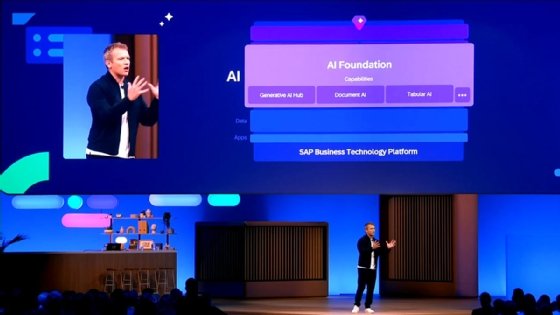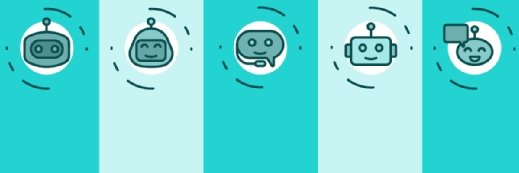
At TechEd, SAP continues to lay down the AI data foundation
New tools to speed up agentic AI development, open SAP platforms and provide access to data products were also touted as helping companies get business value from their AI.
In a slew of announcements this week, SAP significantly broadened its data offerings for AI and bolstered the tools that corporate and commercial developers use to build AI applications on SAP platforms.
SAP continued to fill in details of its promise to open up its platforms and build a strong foundation for AI at its annual SAP TechEd conference this week in Berlin, Germany. In contrast to the SAP Sapphire conference for business-level buyers and users held every spring, TechEd is geared to developers and other IT professionals who work with SAP platforms.
Data that plays nice with others
The announcement generating the most buzz was a new partnership with Snowflake, which makes a cloud-based data and AI platform. SAP said Snowflake will now be available as an extension to users of Business Data Cloud (BDC), its SaaS-based data and analytics platform.
The announcement was both unsurprising and important. Earlier this year, SAP augmented BDC with a service from Databricks, which makes a data management and governance platform that uses generative AI to make data accessible through natural-language queries. Then, at its new SAP Connect conference in October, the vendor unveiled bidirectional links from BDC to Google Cloud and said similar announcements were imminent.

Adam Ronthal, a vice president analyst at Gartner, said the data-related announcements reflect SAP's willingness to put serious resources behind its promise to open its platform. "We now have SAP, with BDC, partnered with two of the most popular platforms in the data and analytics space," Ronthal said.
He said SAP's previous strategy centered on data lakes wasn't resonating with clients and needed to be addressed.
The Databricks partnership was the first big step in that direction. "It was an acknowledgement that all the data in the world that people care about is not 100% SAP data, and they needed an effective conduit to bring that data into the SAP playground."
Jon Reed, co-founder of analyst firm Diginomica, said the Snowflake news was proof that SAP understands it can't develop a product with as much traction as Snowflake, which has seen rapid growth in a cloud data warehousing market dominated by AWS, Google and Microsoft.
"It makes more sense to build bridges with the most popular data products," Reed said. "These kinds of announcements help senior decision-makers rationalize their investments and figure out how to make their data assets AI ready for the purposes of their business."
SAP said another product unveiled at the conference, RPT-1 (pronounced "rapid one"), is its first relational foundation model. In contrast to generative AI models such as ChatGPT that analyze mostly unstructured text to predict the next word in a sentence, RPT-1 is designed to do that with the relational and structured business data that underpins enterprise applications, including ERP. SAP claimed RPT-1 can make fast and accurate predictions for common business scenarios, such as delivery delays, payment risk and sales order completion.
SAP has been working for some time on an AI foundation model that provides a way to consume structured data across customers, Reed said. "There's not necessarily customer-specific data in there, but there's a lot of overall data encompassing SAP use cases across industries that allow SAP, in theory, to create more accurate, structured and effective AI results," he said.
The Data Product Studio in BDC -- which was announced earlier this year but highlighted at TechEd -- is a visual workspace for modeling, configuring and managing custom data products across SAP and third-party sources. "It allows you to combine, manage the lifecycle, as well as publish different data products from different systems, including SAP Business Warehouse," said Daniel Yu, chief marketing officer of SAP Data and AI. "Think of it as a nontechnical GUI. You can combine different data products and combine columns and rows into something that business users can [use]."
But the BDC, Snowflake and RPT-1 developments don't just apply to AI, according to Reed.
"What you're trying to do is improve decision-making and access to data throughout your business for a variety of purposes," he said. "Sometimes it might just be self-service analytics or even dashboards. The whole point is that when you start to get a better understanding of what's happening with your data, you're looking at a whole range of possibilities."
Meanwhile, Build, SAP's main development suite, got new capabilities designed to give developers more freedom to build, extend and automate using third-party tools they already use, such as agentic AI development platforms. Extensions allow programmers to access Build from inside the other tools.
SAP makes progress on data management
Ronthal said business leaders will probably like how the data-related announcements help their AI development initiatives, especially in organizations that already run SAP applications. In-house data scientists and engineers will now be able to use two of the data platforms they already prefer working with.
"If you look at SAP 10 years ago, the only data they cared about or thought was important was SAP data," Ronthal said. "We've come a long way since then."
What this does for corporate risk mitigation is, for Ronthal, the bigger story. The push to open APIs to complex systems and data, like in the SAP platforms, means more people who lack technical skills will have access.
"There are two primary goals for any data and analytics leader. One is that you don't wind up in the media as the subject of an embarrassing AI or data breach," Ronthal said. "The second is that you don't get hauled into your CFO's office and yelled at for cost overruns." Partnerships like those with Snowflake and Databricks provide the guardrails and governance that companies need to be successful with their AI efforts, he said.
At TechEd, SAP also announced AI guardrails for its Business Technology Platform -- its main integration and development platform -- including data privacy and security services, proactive notifications for real-time risk mitigation, and AI-driven data anonymization.
"We're starting to get a little bit clearer on the importance of governance and role-based, secure data, and a lot of customers don't want to have to build all of that out themselves," Reed said. "One of the challenges we're facing in the AI world is it's very easy to spin up applications quickly. This is, in part, what the vibe coding hype is all about, where you type in a prompt and generate all this code. But how secure is that code? And will that code have negative downstream impacts?"
David Essex is an industry editor who covers enterprise applications, emerging technology and market trends, and creates in-depth content for several TechTarget websites.






